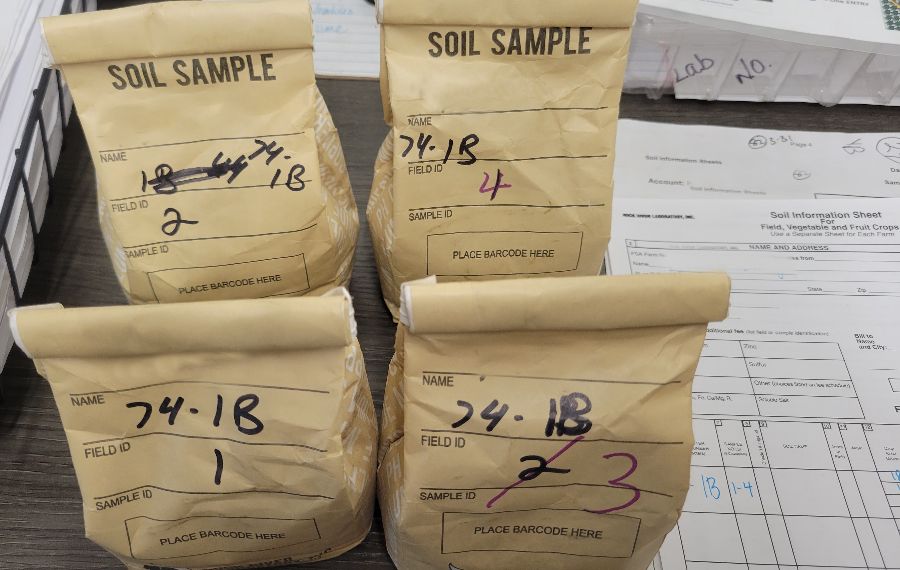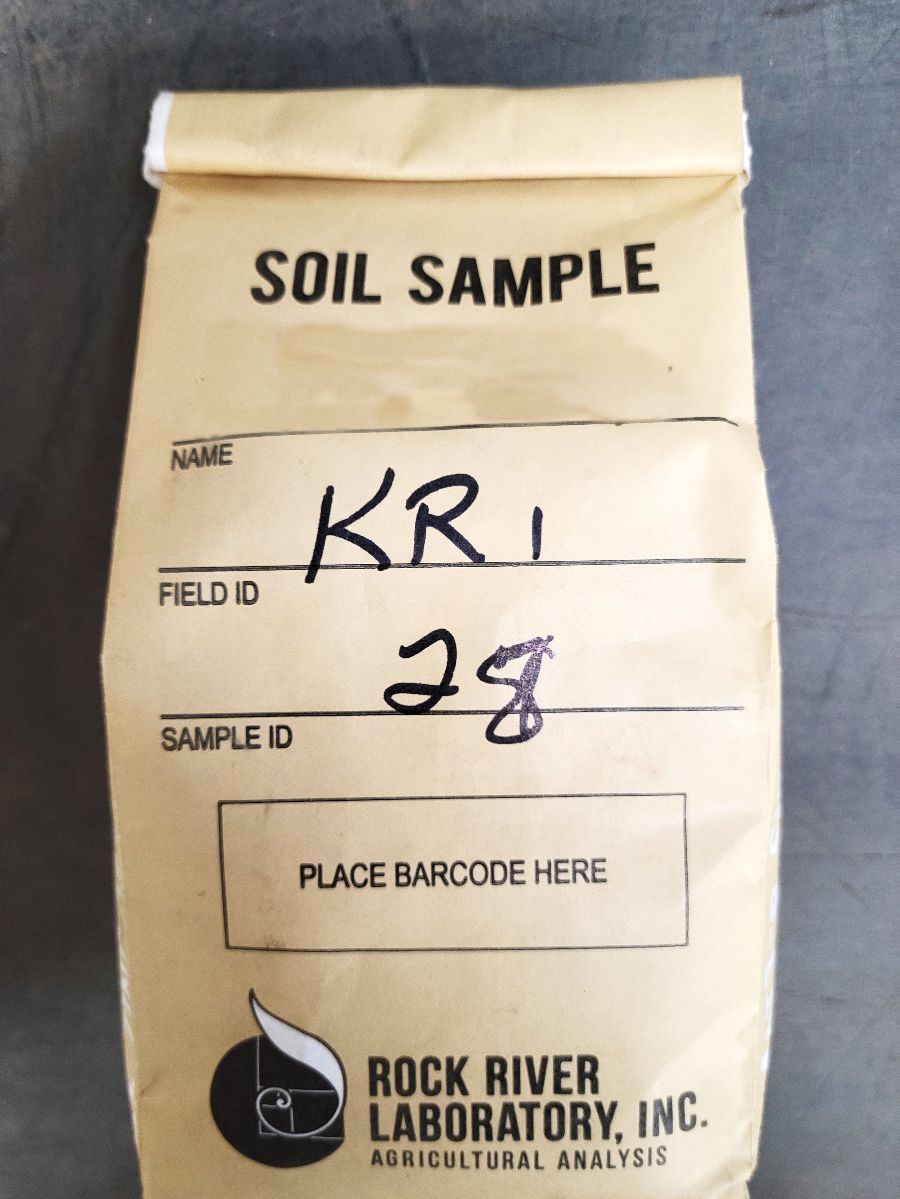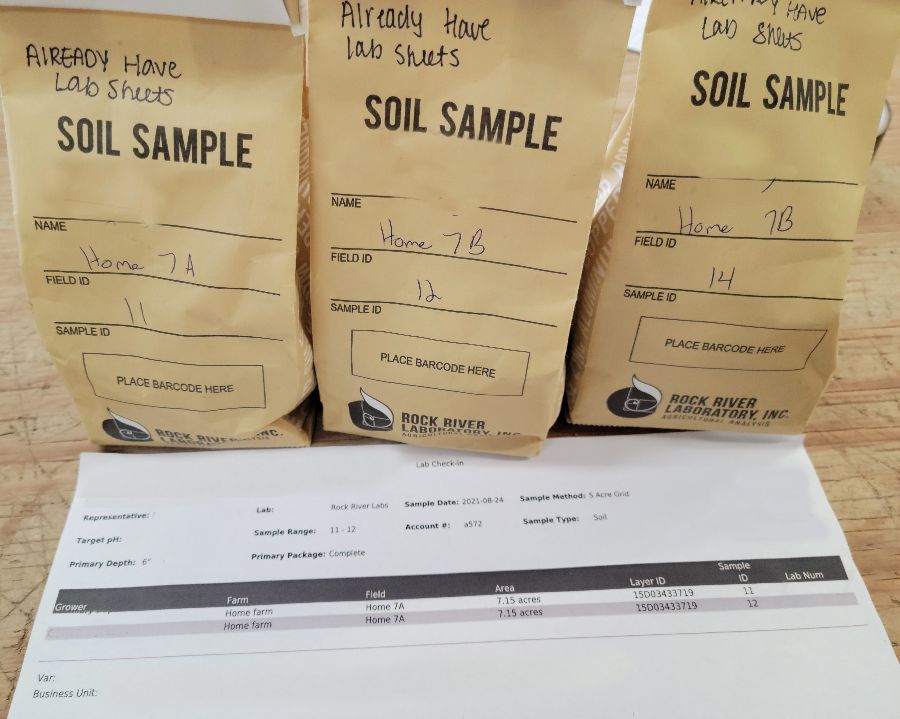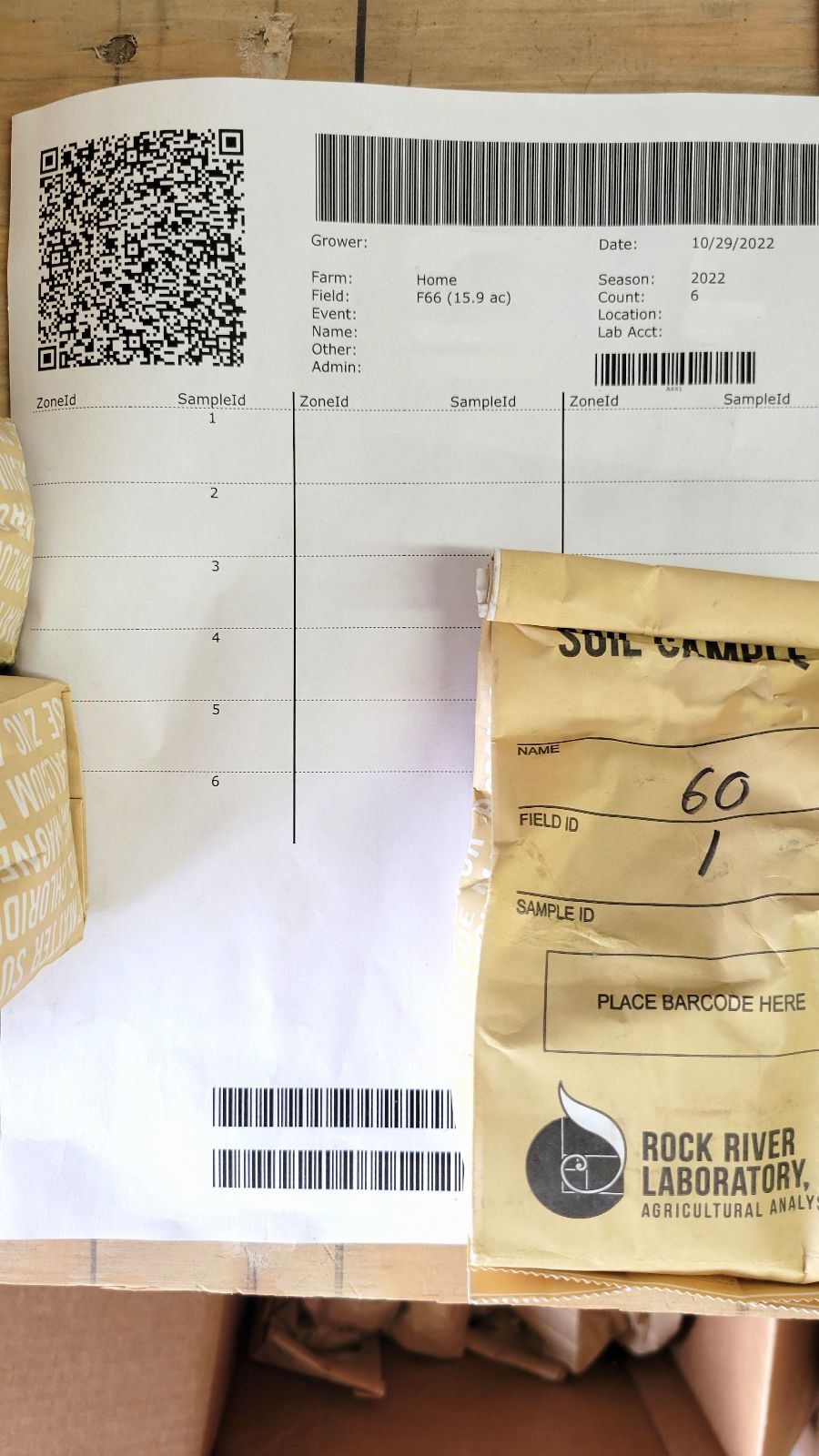By: Kerri Helwig, CCA, Agronomy data and customer support specialist
There are two main seasons in which soil samples pour into our lab: spring and fall. During these times, towers of boxes fill what we call the ‘login area’. Each box must be checked for paperwork and the corresponding samples to ensure the results get to the right place - into your hands to help your growers make informed decisions.
It is only through concise, manual observations that we can pair the laboratory results back to the hardcopy paperwork. Back to you, and back to the specific grower, farm, field, and individual samples. The nature of this process requires that the submitted information is as clearly defined as possible. The more organized the submitted samples are, the faster and easier it will be to get them processed in a timely manner. So how can you improve the turnaround time and accuracy of your sample information? I have a few suggestions to ensure your samples will be processed with maximum efficiency - saving you time and headaches when it comes to preparing all those recs! Be sure to guess the issue on each of the supporting images - guilty parties are not identified.
Clearly Labeled Sample Bags
Is that a 4 or a 9?
Unclear handwriting can make it very difficult to distinguish sample IDs. In such cases, we try our best at pictionary, but we may have to contact you to resolve the issue - leading to sample processing delays and potentially delayed results. When you’re in the thick of writing recommendations to immediately spread fertilizer, such delays not only cause stress but can ruin the relationship you have with your own customers.


Accurate Paperwork
Once a sample is poured out of its bag, it no longer has an identity, other than what is written or printed on the submission sheet. This makes it incredibly important that the sample bags match what is on the paperwork. What is written on the paperwork is what will eventually show up on your reports, so it is critical that all the sample information is written here and not just on the bags.

Organization
Keeping samples organized not only helps you track which samples have been sent in, but also helps our employees process them accurately and efficiently. We know that fieldwork can be hectic, but ensuring that all samples and the corresponding submission sheets are in the same box is mutually beneficial for samplers and Rock River Laboratory staff. It greatly reduces the chance that we have to contact you for missing samples, saving you time, and money, in the long run.

We know this is a mundane task, labeling and organizing, so we built a system to help alleviate the stress of this process I previously described. Web-based Soil Information Sheets (SIS) can be accessed from your website account (if you do not currently have a web account, contact us to set one up). Here you can add all of your growers and all of their fields, even before the busy season when you need to access them. Then you are able to print out labels for your soil bags and submission forms, completely avoiding issues that may arise with handwritten forms and bags. Check out the photos we’ve included here and take your best guess and the offense! Guilty parties are not identified.
The busy soil season is stressful on everyone - especially agronomists. Our team understands and is here to help try and make life easier and more convenient. Already doing all of the above but still finding pain points? Let us know where we can help to keep samples flowing and your business rolling!

